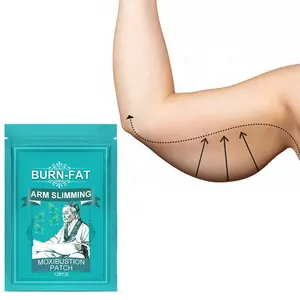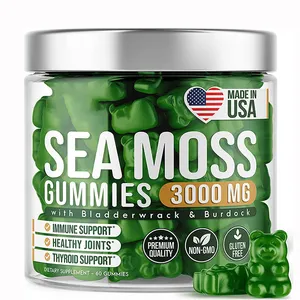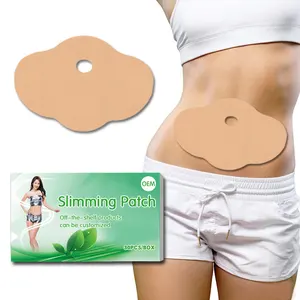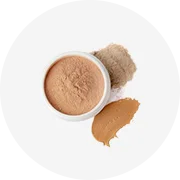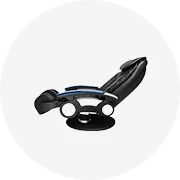ได้รับความนิยมในอุตสาหกรรมของคุณ






มังกรยามผู้ผลิตขายส่งทั้งหมดแบนพลาสติก Proximity TK4100/ EM4200/ T5577 RFID 125กิโลเฮิร์ตซ์บัตรว่างเปล่า
฿3.71 - ฿18.52
การสั่งซื้อขั้นต่ำ: 500 ชิ้น



ที่กำหนดเองพีวีซีชิป IC บัตร ISO/IEC 7816 SLE4442อิงค์เจ็ทพิมพ์ Rewritable บัตร RFID
฿1.86 - ฿14.82
การสั่งซื้อขั้นต่ำ: 100 ชิ้น
การจัดส่งต่อชิ้น: ฿17.78







ที่กําหนดเองพลาสติก PETG PVC การ์ด NFC NTAG213/NTAG215/NTAG216 พิมพ์เปล่าโซเชียลมีเดีย NFC การ์ดไร้สัมผัส RFID สมาร์ทชิปการ์ด
฿2.97 - ฿18.52
การสั่งซื้อขั้นต่ำ: 100 ชิ้น







เครื่องปั๊มอิออนแบบฉีดพลาสติกแม่พิมพ์ไอออนแบบกำหนดเองฉีดพลาสติกแม่พิมพ์ตัดตายการ์ดอวยพรแบบจมเครื่อง CNC EDM Sparkes
฿74,069.68 - ฿1,111,045.20
การสั่งซื้อขั้นต่ำ: 1 ชุด






บัตรรับประกันธุรกิจพลาสติกพีวีซีผิวด้านใสพิมพ์ลาย4C แบบเลเซอร์ทอง/เงิน
฿3.34 - ฿4.45
การสั่งซื้อขั้นต่ำ: 1000 ชิ้น






นามบัตรสมาชิกโฮโลแกรมหรูหราแบบกําหนดเองพิมพ์ส่วนบุคคลบนพลาสติก

฿1.49 - ฿11.12
การสั่งซื้อขั้นต่ำ: 200 ชิ้น
การจัดส่งต่อชิ้น: ฿5.19






เครื่องอ่านค่าระยะไกล1นิ้ว40มม. จอแสดงผล LCD แบบไอพ่นเดี่ยวเครื่องทำน้ำแบบเติมเงินอัจฉริยะพร้อมการ์ด IC
฿1,185.12 - ฿1,407.33
การสั่งซื้อขั้นต่ำ: 10 กล่อง






บัตรรหัส Pin ปลอดภัยสำหรับธุรกิจโซลูชั่นไบโอเมตริกซ์ EMV บัตร
พร้อมส่ง
฿25.56 - ฿37.04
การสั่งซื้อขั้นต่ำ: 1 เพิร์ช
การจัดส่งต่อชิ้น: ฿135.55












เสิ่นเจิ้นกล่องพลาสติกอุปกรณ์เดสก์ท็อปอุปกรณ์ทดสอบแบบมือถือปลอกพลาสติกผู้ออกบัตร
฿91.85 - ฿99.26
การสั่งซื้อขั้นต่ำ: 1 ชิ้น
การจัดส่งต่อชิ้น: ฿261.84
การค้นหาที่เกี่ยวข้อง:
แม่พิมพ์พลาสติกการ์ดการทำบัตรแผ่นพลาสติกใสบัตรพลาสติกรูปทรงพิเศษบัตรพลาสติกสำหรับเครื่องมือแม่พิมพ์การ์ด sdบัตรพลาสติกแม่พิมพ์ที่กำหนดเองทำบัตรพลาสติกรอยขีดข่วนบัตรทำพลาสติกความภักดีทำนามบัตรฟรีบัตรหมัดแฟชั่นแม่พิมพ์บัตรอิเล็กทรอนิกส์แม่พิมพ์ใส่บัตรพลาสติกบริษัทแสตมป์ยางทำบัตรผู้จัดจำหน่ายแม่พิมพ์ทำบัตรบัตรเจาะกุญแจ






VG คุณภาพสูงพิมพ์ลามิเนตระเหิดพลาสติกสีขาว Id เกมกระดานธุรกิจเปล่า PVC อิงค์เจ็ทการ์ด

฿0.7407 - ฿1.12
การสั่งซื้อขั้นต่ำ: 2 ชิ้น






ทำในประเทศจีนความแม่นยำสูง PID ควบคุมอุณหภูมิการ์ดสำหรับระบบวิ่งร้อนที่ใช้สำหรับเครื่องฉีดพลาสติก
฿4,629.36 - ฿4,814.53
การสั่งซื้อขั้นต่ำ: 1 ชุด
การจัดส่งต่อชิ้น: ฿1,111.05






Precision พลาสติกแม่พิมพ์คาสิโนอัตโนมัติเล่นโป๊กเกอร์ Shuffle Master Shuffler เครื่องแม่พิมพ์ Molding ชิ้นส่วน
฿74,069.68 - ฿222,209.04
การสั่งซื้อขั้นต่ำ: 1 ชุด












บัตรควบคุมสำหรับอุตสาหกรรมแม่พิมพ์ฉีดพลาสติกป้องกันการเผาไหม้ร้อนวิ่งควบคุมโมดูลการควบคุมอุณหภูมิบัตร
พร้อมส่ง
฿1,444.36 - ฿2,110.99
การสั่งซื้อขั้นต่ำ: 1 ชิ้น
การจัดส่งต่อชิ้น: ฿701.07






แม่พิมพ์ฉีดพลาสติกอิเล็กทรอนิกส์สําหรับผู้บริโภคที่กําหนดเองแม่พิมพ์ฉีดสําหรับกล่องทีวี Android พร้อมซิมการ์ด 3g 4g
฿37.04
การสั่งซื้อขั้นต่ำ: 1 ชุด






แผงวงจรเชื่อมต่อเครือข่ายแบบไร้สายอุปกรณ์สื่อสาร USB แบบคู่5G ส่วนเปลือกบัตรแม่พิมพ์ฉีดพลาสติก ABS
฿3.71 - ฿88.89
การสั่งซื้อขั้นต่ำ: 2 ชิ้น






บริษัทที่จะเสร็จสิ้นการฉีดชิ้นส่วนแม่พิมพ์สำหรับบัตรและผู้ถือซิลิโคนแม่พิมพ์ Longsheng
฿40.74 - ฿77.78
การสั่งซื้อขั้นต่ำ: 1 ชิ้น
การจัดส่งต่อชิ้น: ฿83,196.18





เครื่องเป่าพลาสติกหลายช่องแบบมืออาชีพ,แม่พิมพ์เป่าขวดน้ำดื่มแร่แบบกำหนดเองได้
฿18,517.42 - ฿74,069.68
การสั่งซื้อขั้นต่ำ: 1 ชิ้น






SZOMK Zhejiang โรงงานพลาสติก moldconcrete หล่อหล่อหลอดแม่พิมพ์อลูมิเนียมแม่พิมพ์ผลิตสำหรับอิเล็กทรอนิกส์
฿111,104.52 - ฿185,174.20
การสั่งซื้อขั้นต่ำ: 1 ชุด






แม่พิมพ์ฉีดขึ้นรูปสำหรับการหล่อพลาสติก
พร้อมส่ง
฿111,104.52 - ฿185,174.20
การสั่งซื้อขั้นต่ำ: 1 ชุด
การจัดส่งต่อชิ้น: ฿14,065.47






เครื่องฉีดขึ้นรูปพลาสติกขนาดเล็กตั้งโต๊ะไฟฟ้าอัตโนมัติเต็มรูปแบบ
฿29,627.88 - ฿37,034.84
การสั่งซื้อขั้นต่ำ: 1 ชุด





มีประสบการณ์พลาสติกเปลือก POS เครื่องบัตรเครดิต Molding โรงงานและแม่พิมพ์ Maker
฿11,110.46 - ฿111,104.52
การสั่งซื้อขั้นต่ำ: 1 หน่วย






ชิ้นส่วนมืออาชีพคุณภาพสูงความแม่นยํา PVC ฉีดพลาสติกแม่พิมพ์ทําแม่พิมพ์เครื่องมือผู้ผลิต Maker
฿3.71 - ฿18.52
การสั่งซื้อขั้นต่ำ: 500 ชิ้น
การจัดส่งต่อชิ้น: ฿66.67






เครื่องอ่านบัตรเปลือกพาวเวอร์แบงค์ ปิดเปลือก แม่พิมพ์พลาสติกแบบกําหนดเอง
฿3,259.07 - ฿3,703.49
การสั่งซื้อขั้นต่ำ: 1 ชุด






เครื่องขึ้นรูปบัตรเครดิตพลาสติกแม่พิมพ์การขึ้นรูปเครื่องรูดแบบฉีดด้วยระบบอิเล็กทรอนิกส์
฿37,034.84 - ฿185,174.20
การสั่งซื้อขั้นต่ำ: 1 ชุด






ของขวัญและงานฝีมือ CNC ตัดวัสดุเป็นมิตรกับสิ่งแวดล้อมขาตั้งจอแสดงผลพลาสติกอะคริลิคส่วนบุคคลขาตั้งอะนิเมะ

฿31.48 - ฿51.85
การสั่งซื้อขั้นต่ำ: 2 ชิ้น





ที่มีคุณภาพสูงที่กำหนดเองการผลิตในครัวเรือนอลูมิเนียมตายหล่อแม่พิมพ์เครื่องหล่อตาย
฿226,097.70
การสั่งซื้อขั้นต่ำ: 1 ชุด






แม่พิมพ์ฉีดแบบมืออาชีพแม่พิมพ์ฉีดพลาสติกบริการฉีดขึ้นรูปสำหรับที่อยู่อาศัยพลาสติก
฿11.12 - ฿14.82
การสั่งซื้อขั้นต่ำ: 5000 ชุด
การจัดส่งต่อชิ้น: ฿12.97






ชิ้นส่วนรถยนต์แม่พิมพ์ฉีดพลาสติกหัวเข็มขัดการผลิตแม่พิมพ์ที่กำหนดเอง
฿111,104.52 - ฿259,243.88
การสั่งซื้อขั้นต่ำ: 1 ชุด






Abs High Precision Auto อะไหล่ความแม่นยำแม่พิมพ์พลาสติกแม่พิมพ์ฉีดพลาสติก Maker
฿0.3704 - ฿37.04
การสั่งซื้อขั้นต่ำ: 1 ชิ้น






เครื่องอ่านบัตรเครดิต Manucfacturing แบบกำหนดเอง,แม่พิมพ์ฉีดพลาสติกขึ้นรูป Pc เครื่องผลิตแม่พิมพ์ Pvc แบบยืดหยุ่น
฿118,511.49 - ฿133,325.43
การสั่งซื้อขั้นต่ำ: 1 ชุด





แผ่นเหล็กรับตำแหน่งแผ่นพลาสติกแผ่นเหล็กแผ่นเหล็กแผ่นพลาสติกสำหรับใช้ในการก่อสร้าง
฿3.71 - ฿185.18
การสั่งซื้อขั้นต่ำ: 100 ชิ้น






ที่กำหนดเอง IMD ฉีดพลาสติกบัตรน้ำร้อน InserterTouch แผงแม่พิมพ์ทำให้ผู้ผลิต
฿29.63 - ฿37.04
การสั่งซื้อขั้นต่ำ: 1 ชุด






Bigimage ป้ายอะคริลิคโปร่งแสงสำหรับโฆษณาตัวอักษรอะคริลิก3D สั่งทำพิมพ์โลโก้ได้ตามต้องการ

฿95.55 - ฿217.77
การสั่งซื้อขั้นต่ำ: 2 ชิ้น
การจัดส่งต่อชิ้น: ฿647.74















แม่พิมพ์ฉีดขึ้นรูปเครื่องอ่านการ์ดทำจากพลาสติก
฿55.56 - ฿111.11
การสั่งซื้อขั้นต่ำ: 1 ชิ้น
การจัดส่งต่อชิ้น: ฿262.95
หมวดหมู่ยอดนิยม
เกี่ยวกับ บัตรแม่พิมพ์พลาสติก
บัตรแม่พิมพ์พลาสติก ไม่ใช่เรื่องใหม่สำหรับคนทั่วไปในปัจจุบันและไม่ถือว่าเป็นสิ่งต้องห้ามอีกต่อไป หากคุณกำลังมองหาความสุขสุดท้ายนี้คุณต้องตรวจสอบความยิ่งใหญ่ คอลเลกชัน บัตรแม่พิมพ์พลาสติก ที่ Alibaba.com เหล่านี้ยั่วยวนและโค้ง บัตรแม่พิมพ์พลาสติก คุ้มค่ากับเงินทุกบาทและมั่นใจว่าจะทำให้ค่ำคืนนี้พิเศษสำหรับคุณ ตุ๊กตาเหล่านี้มีลักษณะเหมือนจริงตั้งแต่ขนไปจนถึงปลายเท้าในทุกแง่มุม
ไม่ว่าคุณจะเป็นคนขี้เหงาที่กำลังมองหาคู่ชีวิตที่เหมือนมีชีวิตหรือคู่รักที่ต้องการเติมชีวิตชีวาให้กับชีวิตคุณสามารถใช้สิ่งเหล่านี้ได้ . บัตรแม่พิมพ์พลาสติก สำหรับจุดไฟนั้น ที่งดงามเหล่านี้ บัตรแม่พิมพ์พลาสติก สามารถปรับแต่งได้ตามความคาดหวังของคุณ น่าทึ่งเหล่านี้ บัตรแม่พิมพ์พลาสติก มีให้เลือกทั้งชายและหญิงและทำจากซิลิโคนเกรดยาเพื่อความปลอดภัยในการใช้งาน รับตอนนี้และเพลิดเพลินไปกับค่ำคืนแห่งความหลงใหลและไฟ
Alibaba.com ขอเสนอสิ่งที่น่าทึ่งเหล่านี้ บัตรแม่พิมพ์พลาสติก ในทุกรูปร่างขนาดและชาติพันธุ์ ไม่ว่าความต้องการของคุณสำหรับไฟล์. บัตรแม่พิมพ์พลาสติก คุณสามารถหาได้ทั้งหมดบนไซต์ เหล่านี้ บัตรแม่พิมพ์พลาสติก ได้รับการขึ้นรูปโดยช่างฝีมือที่ดีที่สุดและทุกรายละเอียดที่ซับซ้อนจะได้รับการตรวจสอบอย่างละเอียด ตุ๊กตาเหล่านี้มีดวงตาผมเล็บและส่วนอื่น ๆ ของร่างกายคล้ายกับคนในชีวิตจริง
Alibaba.com ให้บริการที่หลากหลาย บัตรแม่พิมพ์พลาสติก ที่สามารถช่วยคุณซื้อผลิตภัณฑ์ที่เหมาะสมกับงบประมาณของคุณและข้อกำหนดอื่น ๆ ผลิตภัณฑ์เหล่านี้ปลอดภัยต่อการใช้งานได้รับการรับรองและเป็นมิตรกับสิ่งแวดล้อม มีคำสั่งซื้อ OEM สำหรับผลิตภัณฑ์เหล่านี้
ไม่ว่าคุณจะเป็นคนขี้เหงาที่กำลังมองหาคู่ชีวิตที่เหมือนมีชีวิตหรือคู่รักที่ต้องการเติมชีวิตชีวาให้กับชีวิตคุณสามารถใช้สิ่งเหล่านี้ได้ . บัตรแม่พิมพ์พลาสติก สำหรับจุดไฟนั้น ที่งดงามเหล่านี้ บัตรแม่พิมพ์พลาสติก สามารถปรับแต่งได้ตามความคาดหวังของคุณ น่าทึ่งเหล่านี้ บัตรแม่พิมพ์พลาสติก มีให้เลือกทั้งชายและหญิงและทำจากซิลิโคนเกรดยาเพื่อความปลอดภัยในการใช้งาน รับตอนนี้และเพลิดเพลินไปกับค่ำคืนแห่งความหลงใหลและไฟ
Alibaba.com ขอเสนอสิ่งที่น่าทึ่งเหล่านี้ บัตรแม่พิมพ์พลาสติก ในทุกรูปร่างขนาดและชาติพันธุ์ ไม่ว่าความต้องการของคุณสำหรับไฟล์. บัตรแม่พิมพ์พลาสติก คุณสามารถหาได้ทั้งหมดบนไซต์ เหล่านี้ บัตรแม่พิมพ์พลาสติก ได้รับการขึ้นรูปโดยช่างฝีมือที่ดีที่สุดและทุกรายละเอียดที่ซับซ้อนจะได้รับการตรวจสอบอย่างละเอียด ตุ๊กตาเหล่านี้มีดวงตาผมเล็บและส่วนอื่น ๆ ของร่างกายคล้ายกับคนในชีวิตจริง
Alibaba.com ให้บริการที่หลากหลาย บัตรแม่พิมพ์พลาสติก ที่สามารถช่วยคุณซื้อผลิตภัณฑ์ที่เหมาะสมกับงบประมาณของคุณและข้อกำหนดอื่น ๆ ผลิตภัณฑ์เหล่านี้ปลอดภัยต่อการใช้งานได้รับการรับรองและเป็นมิตรกับสิ่งแวดล้อม มีคำสั่งซื้อ OEM สำหรับผลิตภัณฑ์เหล่านี้


